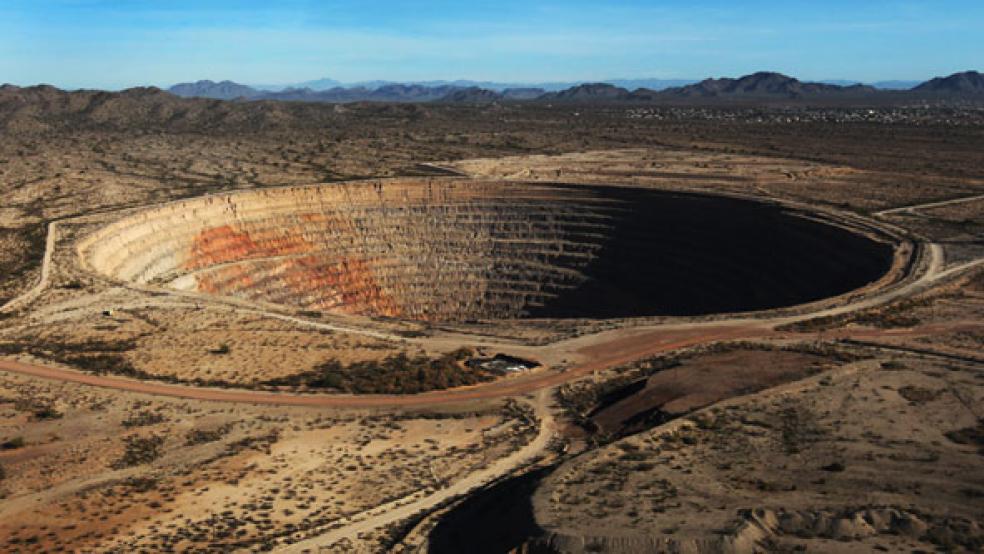Which signal should you heed: The stock market’s message that the future looks relatively robust, or the hints coming from the copper market that a decline in economic growth, and thus in corporate profitability, is on the horizon?
There certainly is a link between demand for copper and economic growth. The metal is an essential ingredient in nearly every kind of manufactured good – it’s needed for homebuilding, including plumbing and wiring; to manufacture cars; to ensure that computers and air conditioners work. In theory, copper’s price should serve as an indicator of the health of the manufacturing industry and ultimately of consumer demand for everything from new homes to new iPhones. That’s how the metal earned the moniker “Dr. Copper.”
RELATED: Ready for Another Gold Rush?
Except, that is, when its diagnosis is off. Or so argue the researchers at Birinyi Associates, who have gone back in time nearly 25 years to identify 32 occasions on which the metal’s price has slumped more than 6 percent, as it has since the end of February. What they discovered is that three months after such a decline, industrial production has climbed (rather than fallen) 78 percent of the time, while the stock market (as measured by the S&P 500) has risen, by an average of 2.59 percent.
Of course, some of the exceptions to this pattern lie in very recent memory, and thus exert a disproportionate impact on investors’ thinking. Of the declines that the Birinyi researchers identified, three occurred during the runup to the financial crisis of 2008, or during the crisis itself. The worst of these was a 63.8 percent nosedive in the price of copper in the second half of 2008, at the height of the crisis; in the three months that followed, industrial production tumbled 4.25 percent (the largest such decline of any of the 32 periods studied), while the S&P 500 fell 11.67 percent, also the largest such decline.
The magnitude of those market events, combined with the fact that they are still vivid in our memories, means that there is at least a chance they will distort our ability to dispassionately evaluate whether the current slump in copper prices is an indication of similarly dire events or ultimately not a source of worry, as most often has been the case. But the 2008 economic and market catastrophes weren’t caused by a slowdown in economic growth reflected in the price of copper; rather, they were the result of financial market speculation and leverage.
Copper prices have proven to be far more volatile than either the economy or even stock prices. Even in periods when a slump in copper prices has been followed by corresponding drops in industrial production or stock prices, those other declines have been far more muted. Take the second quarter of 2004 as an example: While the price of copper fell 11.4 percent, stock prices retreated only 2.3 percent, and industrial production actually edged higher.
Pundits hoping to read more into apparently logical relationship between copper, the economy and stock prices often overlook a key fact: Copper prices reflect other forces, as well. For instance, the 31.87 percent freefall in the price of copper from late 1995 through to the autumn of 1996 – and another decline of 9.11 percent in the last month of 1996 – had more to do with the unwinding of massive speculation in the copper market after regulators realized that the world’s single largest trader in the metal, Yasuo Hamanaka (aka “Mr. Copper”) was actually a rogue trader. Unsurprisingly, therefore, the metal’s sharp price declines had no impact on economic growth, corporate earnings growth or U.S. stock prices, which at the time were in the midst of a long-term bull market.
The historical data compiled by Birinyi Associates isn’t a reason to shrug off the uncomfortable reality that copper prices have been falling even as the stock market rally has continued. It does, however, mean that it would be foolish to leap to conclusions about what the movement in copper prices signals about the economy and the outlook for stocks.
RELATED: Photo Gallery: Forget Gold, Copper Is King
It’s much more rational to turn the equation on its head, and use the signals that are being sent by the economy – such as whether new home construction and sales data beginning to move upward following recent gains in new home permitting, or whether auto sales climb – to decide whether or not to take a position in copper futures or options, or seek out mining company stocks that might benefit from an upsurge in the prices of copper and other base metals. Dr. Copper’s track record of diagnosing widespread economic malaise has too often been wrong for a savvy investor – as opposed to a speculator – to do more than react to the current relative price movements by monitoring events.






